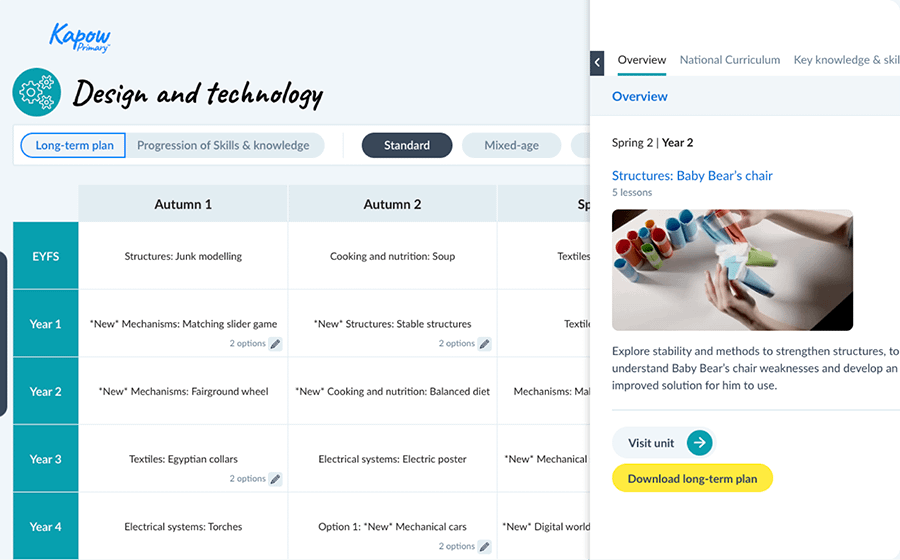- Subjects >
- Design and technology >
- D&T curriculum hub >
-
Design and technology curriculum information
Design and technology curriculum
This page is designed for Design and technology subject leaders to:
- View the Kapow Primary Design and technology curriculum in one convenient place.
- Discover the rationale behind Kapow Primary’s Design and technology curriculum.
- Find relevant information to support leading Design and technology.
The Curriculum and Assessment Review final report has been released. We’re reviewing the recommendations and planning for future updates.
For more information, see our Curriculum updates and FAQs pages.
Design and technology scheme of work
1. Intent
This section outlines the overall D&T curriculum plan, including its structure, sequencing and the specific knowledge and skills students are expected to acquire.
Curriculum aims
Kapow Primary’s Design and technology scheme of work aims to inspire pupils to become curious, creative and innovative thinkers with a broad understanding of how products are designed and made, in other words, to think like designers and engineers. The intention is for pupils to develop the confidence to identify problems, generate ideas, plan and create products and evaluate their outcomes.
The scheme aims to raise pupils’ awareness of how design and technology shape the way they live, work and interact with the world. It encourages pupils to become resourceful, enterprising individuals who have the skills to contribute to and improve the world around them.
The scheme supports teachers in developing their subject knowledge and skills, enabling the delivery of engaging, well-informed lessons with confidence. The curriculum is designed to be both accessible and ambitious, ensuring all learners’ full participation and potential achievement.

Statutory and non-statutory guidance
National curriculum
Kapow Primary’s standard, mixed-age and condensed schemes of work fulfil the statutory requirements for Design and technology outlined in National curriculum (2014).
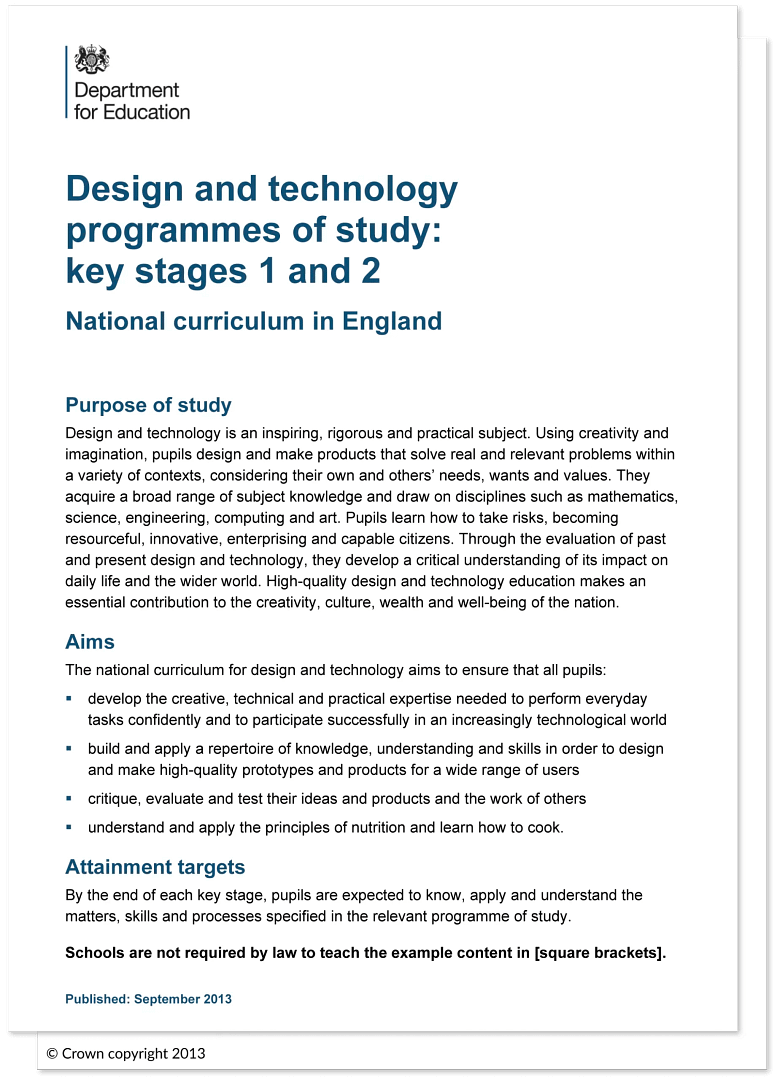
New research and developments
The standard, mixed-age and condensed D&T schemes are continually evaluated and refined through regular curriculum reviews, internal audits and feedback from subscribing schools.
Updates are informed by the latest subject-specific research, changes to National curriculum guidance and developments in pedagogy. This ensures the curriculum remains current, effective and relevant.

Broad and balanced curriculum
The strands
Kapow Primary’s Design and technology curriculum is structured around four strands that run through every unit:
- Design.
- Make.
- Evaluate.
- Technical knowledge.
These strands ensure a balanced coverage of the substantive, disciplinary and procedural knowledge pupils need to progress in Design and technology.
They support the development of creativity, problem-solving and technical understanding, preparing pupils to design purposeful, functional products with increasing independence and confidence.
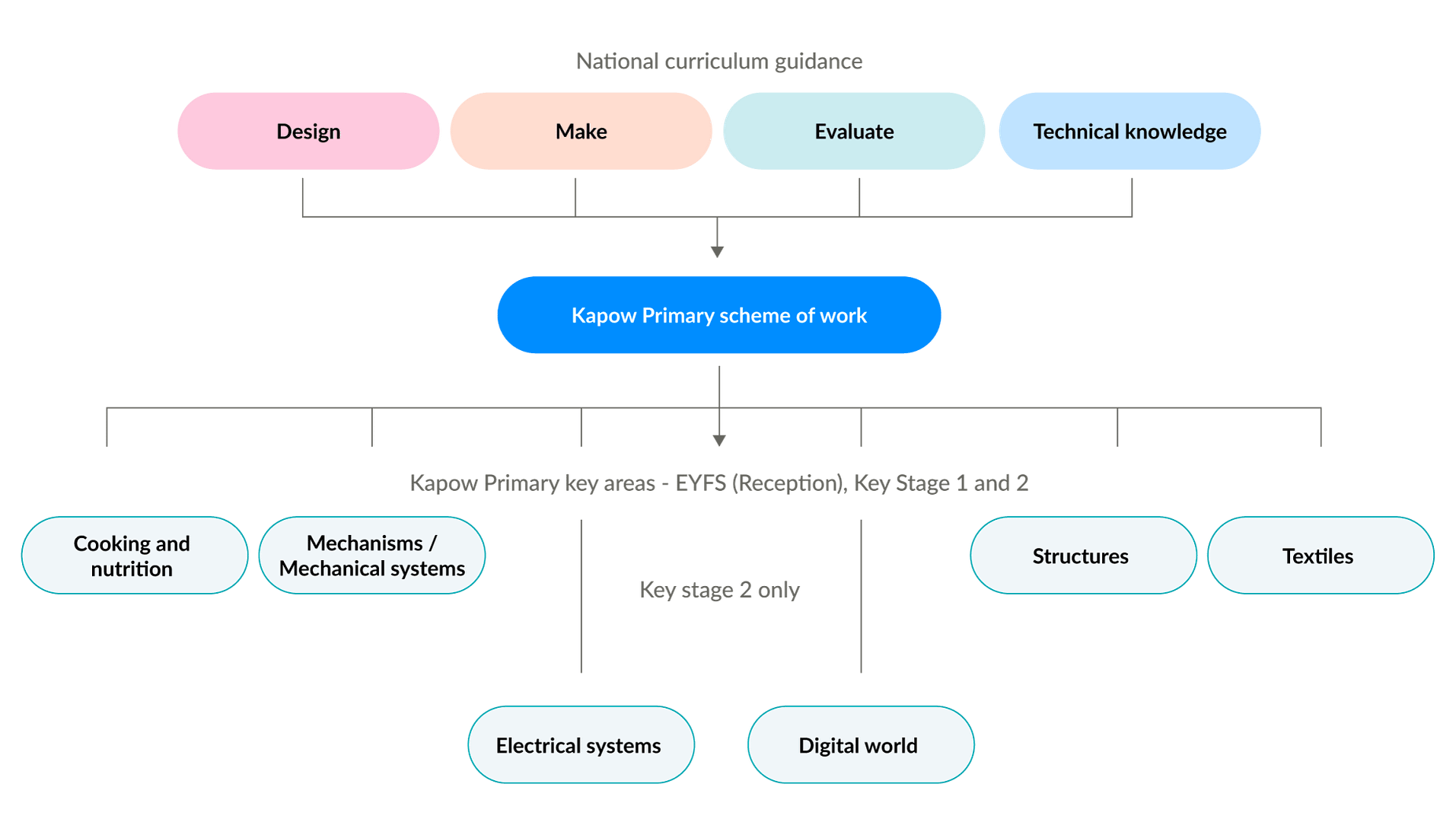
Design
Learning how to generate, develop and communicate ideas that respond to real problems and user needs.
Make
Applying practical skills to select tools, materials and techniques to construct high-quality, functional products.
Evaluate
Reflecting critically on the pupils' own work and the work of others, using feedback and criteria to improve outcomes.
Technical knowledge
Building an understanding of how products work, including the properties of materials, mechanisms, electrical systems and nutrition.
Key areas
The National curriculum for Design and technology sets out the importance of creativity through different contexts in the Technical knowledge strand, referring to structures, mechanisms and electrical systems. Cooking and nutrition are given their own heading.
To support this, Kapow Primary’s D&T curriculum is organised into the following six key areas:
- Structures.
- Mechanisms/Mechanical systems.
- Textiles.
- Cooking and nutrition.
- Electrical systems.
- The digital world.
These areas are revisited across year groups to give pupils a broad and balanced experience of designing and making products using a range of materials, tools and technologies.

Progression
Progression
The D&T: Progression of skills and knowledge document provides an overview of the skills and knowledge covered in each phase and strand. It explains how D&T skills and knowledge are developed to support pupils in reaching key stage outcomes as outlined in the National curriculum.
New learning is weighted toward the start of each key stage, allowing ample opportunity for it to be revisited and applied in later years. As a result, knowledge accumulation may appear heavier in some year groups than others.

Spiral curriculum
Kapow Primary’s D&T scheme of work has been designed as a spiral curriculum with the following key principles in mind:
- Cyclical – pupils return to the key knowledge and skills again and again during their time in primary school.
- Increasing depth – each time a skill is revisited, it is covered with greater complexity.
- Prior knowledge – pupils build upon previous foundations rather than starting again.

Progressing through practice
Building on the principles of a spiral curriculum, the D&T scheme supports pupils in developing from early understanding of materials and hands-on exploration to refining ideas, evaluating existing products and solving real-world problems.
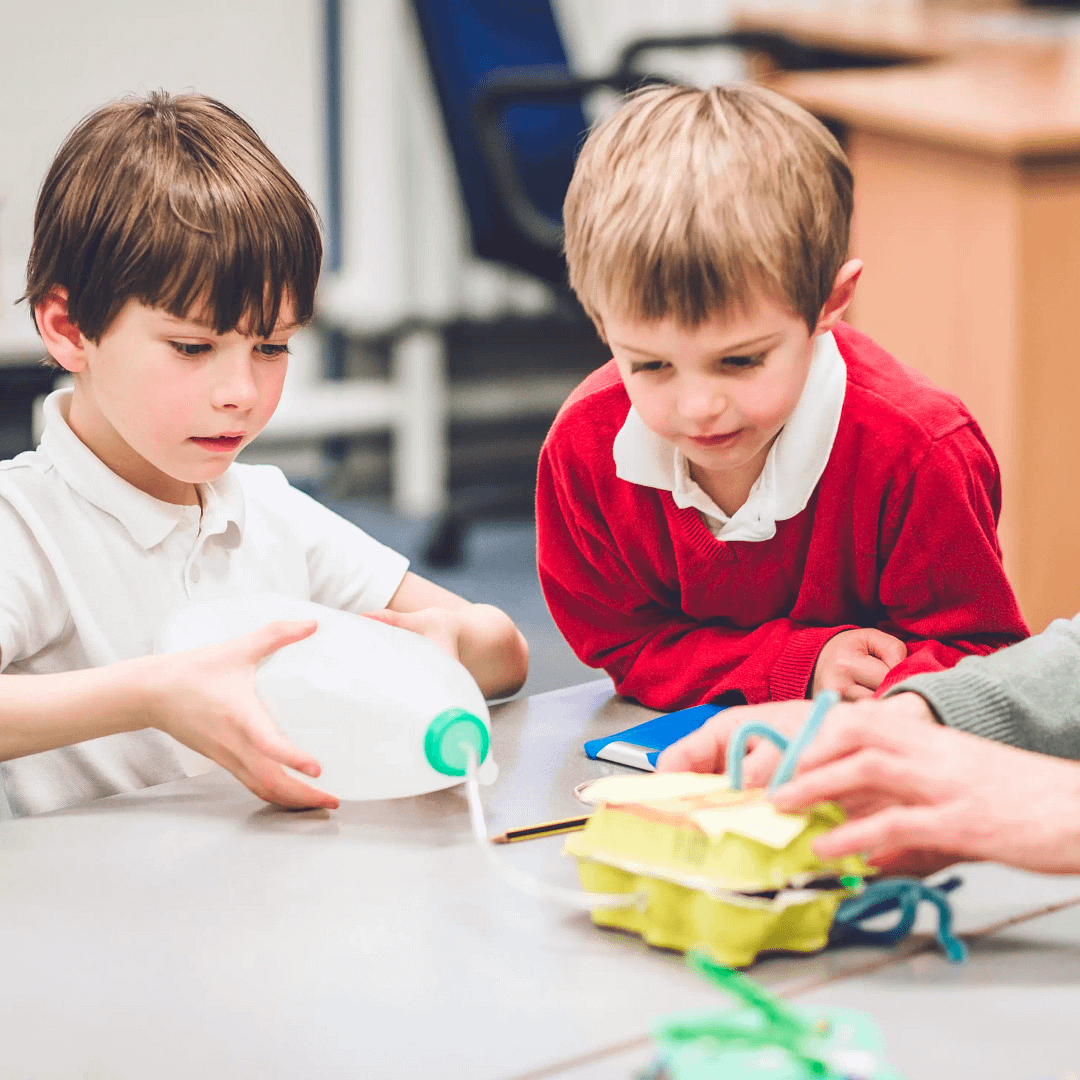
Types of knowledge
Types of knowledge
While there is currently no Ofsted research review specifically for Design and technology, Kapow Primary’s curriculum is informed by research reviews in related subjects such as Art and design, Science and Computing.
In Kapow Primary’s D&T curriculum, knowledge is defined using three interrelated categories:
- Substantive knowledge – the factual and conceptual understanding that underpins the design and creation of products, such as knowing how structures gain stability or how nutrients contribute to a healthy diet.
- Disciplinary knowledge – the thinking processes used by designers, including how problems are explored, decisions are justified and ideas are refined through evaluation and feedback.
- Procedural knowledge – the practical skills and techniques pupils need to make products effectively and safely, such as joining, cutting, shaping or finishing.

Substantive knowledge
Substantive knowledge in D&T refers to the factual and conceptual understanding pupils need to design and make effective products.
This includes knowledge of materials and their properties, mechanical and electrical components, nutrition and food sources and the purpose and features of existing products.

Disciplinary knowledge
Disciplinary knowledge in D&T refers to understanding the practices and thinking processes that underpin the work of designers and engineers.
It encompasses recognising what makes a product effective, approaching problems creatively and testing and refining ideas in response to real needs.

Procedural knowledge
Procedural knowledge in D&T is the knowledge of how to perform tasks: the hands-on skills, techniques and methods needed to design, make and evaluate products effectively.
It encompasses everything from how to cut, shape, join and finish materials to using tools, equipment and ingredients safely and accurately.

Wider knowledge and skills
Digital literacy
Kapow Primary’s D&T curriculum goes beyond basic digital literacy by giving pupils hands-on experience with digital tools and programmable technologies.
Through the Digital world key area, pupils develop confidence in coding, Computer-Aided Design (CAD) and control systems. This supports building the skills to design, monitor and adapt real-world products in a digitally connected world.

Oracy
Lessons encourage discussion, debate and presentations on D&T topics, allowing pupils to articulate their understanding, justify design decisions and engage in collaborative problem-solving.
Pupils use oracy to enhance their learning by thinking aloud, questioning and discussing activities. They develop essential skills such as choosing appropriate technical vocabulary, organising their ideas clearly and listening effectively to others.

Sustainability
Kapow Primary’s D&T curriculum embeds sustainability within the design process, encouraging pupils to consider the environmental impact of the products they design, make and evaluate.
Units across the curriculum explore material choices, food miles and digital solutions that reduce waste or energy use.
The curriculum develops practical problem-solving skills and a deeper understanding of sustainable thinking by engaging pupils with real-world challenges, such as designing for reuse or responsible sourcing.
Pupils learn that thoughtful design can lead to positive change, promoting a sense of agency and responsibility for the world they are helping to shape.

Critical thinking
Pupils analyse design briefs, explore different user needs and perspectives and evaluate materials and production methods.
This helps them to question assumptions and make informed decisions when developing creative, functional and sustainable solutions.

Personal development in D&T
SMSC
The scheme supports Spiritual, Moral, Social and Cultural (SMSC) development by encouraging pupils to:
- Explore different perspectives.
- Reflect on ethical issues.
- Collaborate with others.
- Appreciate cultural diversity through subject-specific content.

British values
Lessons promote British values (democracy, the rule of law, individual liberty, mutual respect and tolerance) by incorporating activities that encourage debate, respect for differing opinions and an understanding of societal structures.

Cultural capital
Kapow Primary’s D&T curriculum broadens pupils’ experiences by introducing them to key designers, inventors, historical and cultural contexts, and a variety of design traditions.
It ensures pupils gain the knowledge and skills needed to engage meaningfully with the designed world and contribute to society. This includes knowledge of the design cycle, a transferable skill applicable to many different disciplines beyond D&T.

Transition from EYFS to KS1
Continuity of learning
Kapow Primary’s D&T scheme aligns with the statutory EYFS (Reception) guidance.
Key themes and skills introduced in EYFS (Reception) are revisited and developed further in KS1, ensuring continuity and progression.
This transition is aided by the continuity of learning created by the curriculum strands, which run from EYFS to Year 6. Subject leaders can pinpoint how knowledge develops in EYFS (Reception) and how this creates the foundation for their learning in KS1.

Building on early experiences
Lessons build on curiosity, exploration and discussion, which are central to EYFS learning. As pupils move into Year 1, more structured activities are gradually introduced.
In KS1, oracy, questioning and storytelling help pupils transition from informal to more formal subject-based learning.

Development of key skills
The D&T scheme supports the progressive development of skills, such as observation, reasoning and problem-solving, which are introduced in EYFS and strengthened in KS1.
Adaptive teaching strategies ensure all learners are supported as they transition to more formal learning approaches.

Cross-curricular links
The D&T scheme aligns with EYFS Early Learning Goals, making links with communication and language, understanding the world and expressive arts to create a smooth transition.
It promotes independence and confidence, supporting pupils as they adapt to the expectations of KS1 learning.

Inclusion and diversity
Inclusion and diversity
Kapow Primary’s D&T curriculum is designed to be inclusive and representative, ensuring all pupils see themselves reflected in the products, users and contexts they explore.
The scheme features a diverse range of design traditions, food cultures, materials and technologies from around the world and encourages pupils to design with empathy and respect to a variety of users.
This approach helps challenge stereotypes, broaden perspectives and celebrate design as a practical, creative and culturally-rich human endeavour.

2. Implementation
This section outlines how the curriculum is taught in the classroom – including teaching strategies, learning activities and the use of resources. It also includes details on how the curriculum can be adapted to suit your school and cohort.
Timetabling
The standard D&T scheme is designed to be taught for an hour a week every half term.
Some schools opt to alternate D&T with Art and design every half term. This decision is informed by market research showing that most schools structure their curriculum this way.
Either of the above approaches meet the needs of the National curriculum.
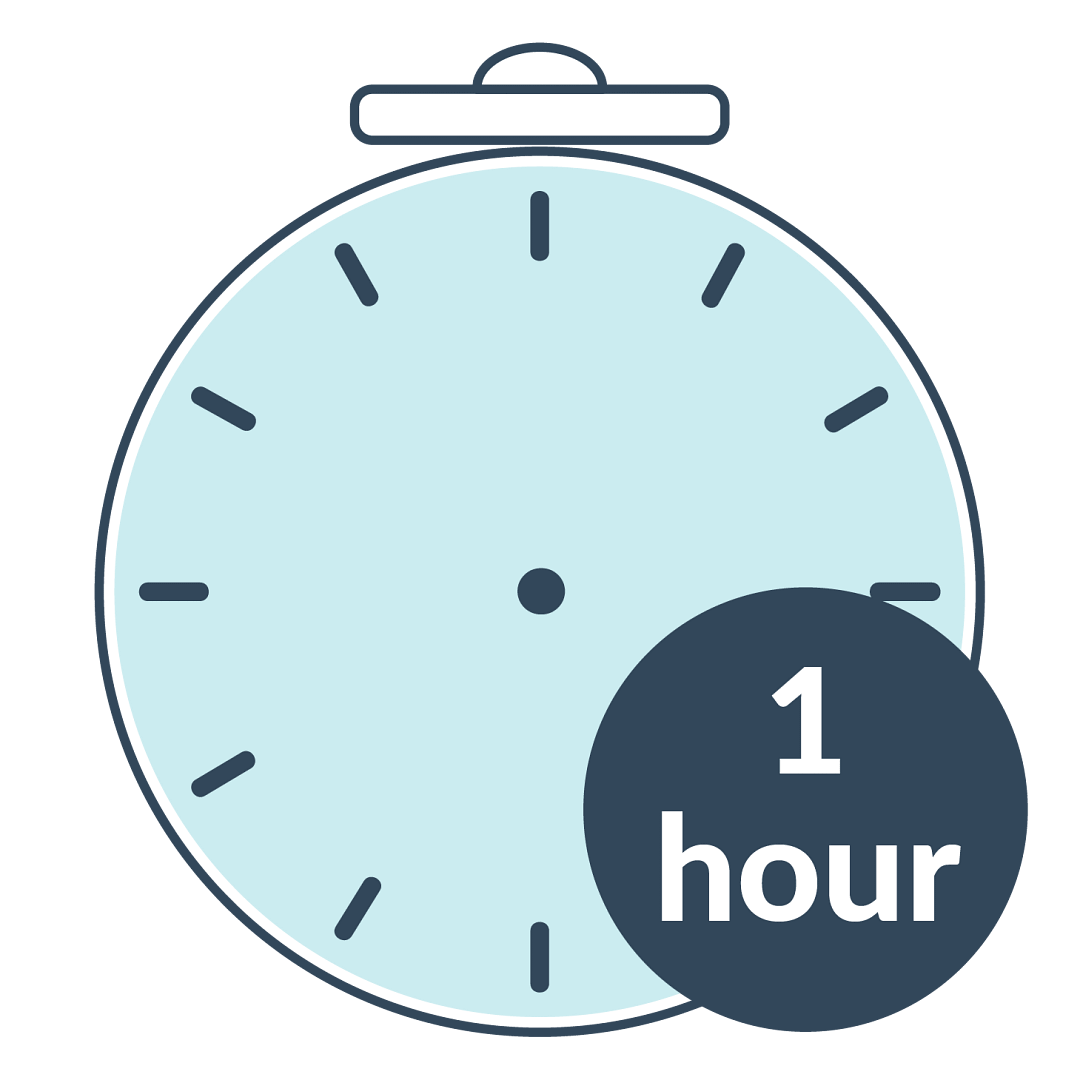
CPD
Kapow Primary supports teachers in delivering the D&T curriculum effectively through clear and informative CPD videos. These videos are designed to help teachers feel confident in their role by providing guidance on key concepts, teaching strategies and best practices.

With Kapow Primary’s CPD videos, subject leaders can develop their expertise and, in turn, support their colleagues in delivering high-quality Design and technology lessons.
Whether helping with subject knowledge, modelling effective teaching techniques or offering practical tips for the classroom, Kapow Primary’s CPD videos ensure that every teacher has access to the support they need.

Preparing for lessons - Before the lesson
Watch
View teacher CPD videos and pupil videos in one place. The videos relate directly to the teaching and learning in the lesson or unit.
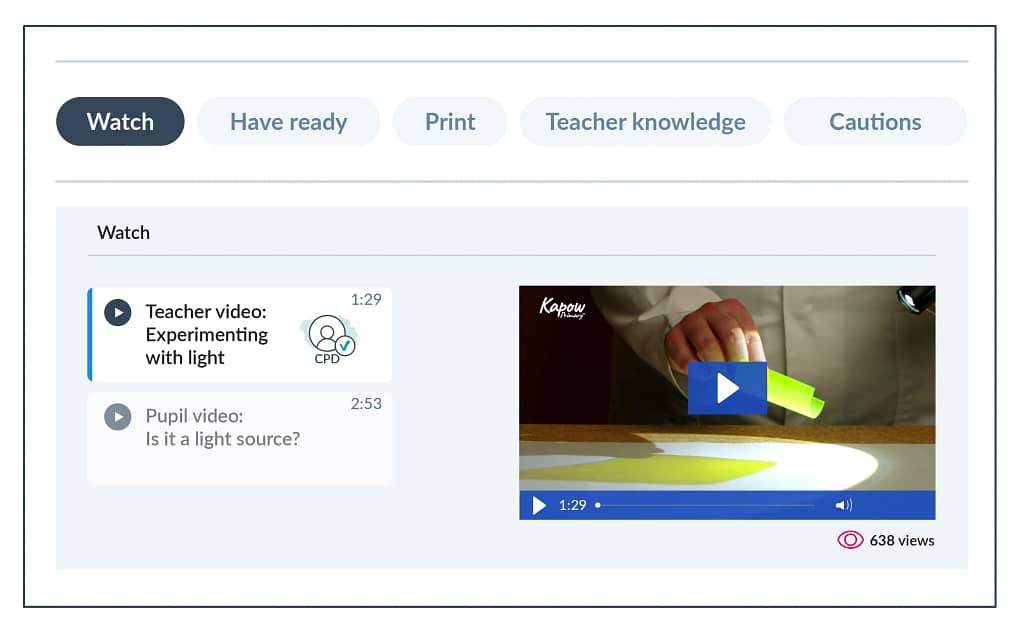 For illustrative purposes only – the exact ‘Before the lesson’ sections vary between lessons.
For illustrative purposes only – the exact ‘Before the lesson’ sections vary between lessons.
Have ready
Prepare for each lesson using a list of the suggested presentations, materials, items or links.
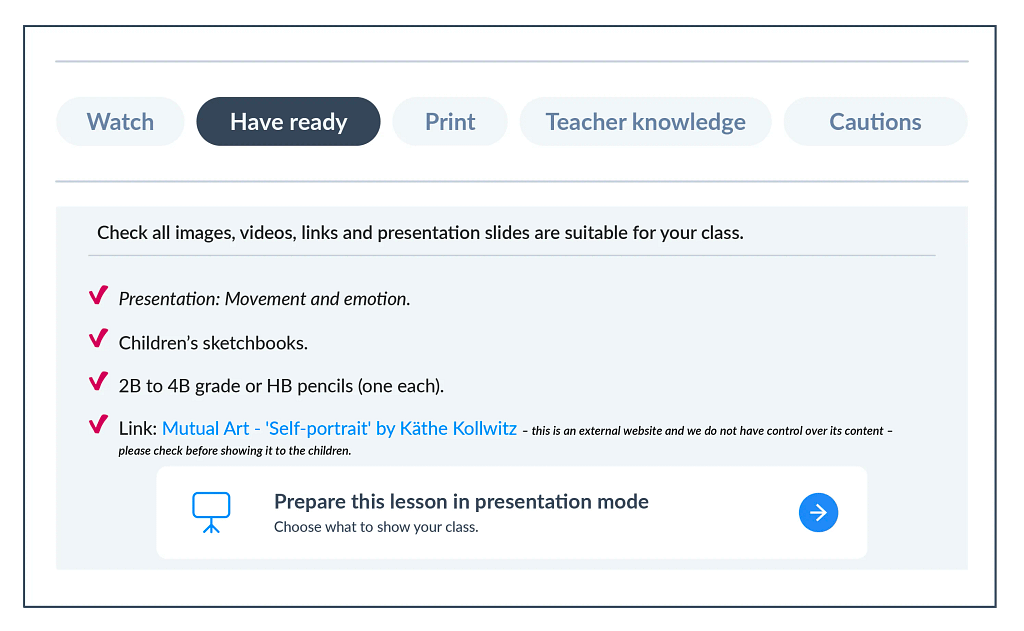 For illustrative purposes only – the exact ‘Before the lesson’ sections vary between lessons.
For illustrative purposes only – the exact ‘Before the lesson’ sections vary between lessons.
This section groups printable resources for each lesson so they can be located easily. Resources are also clearly stated at the point of use in each lesson plan.
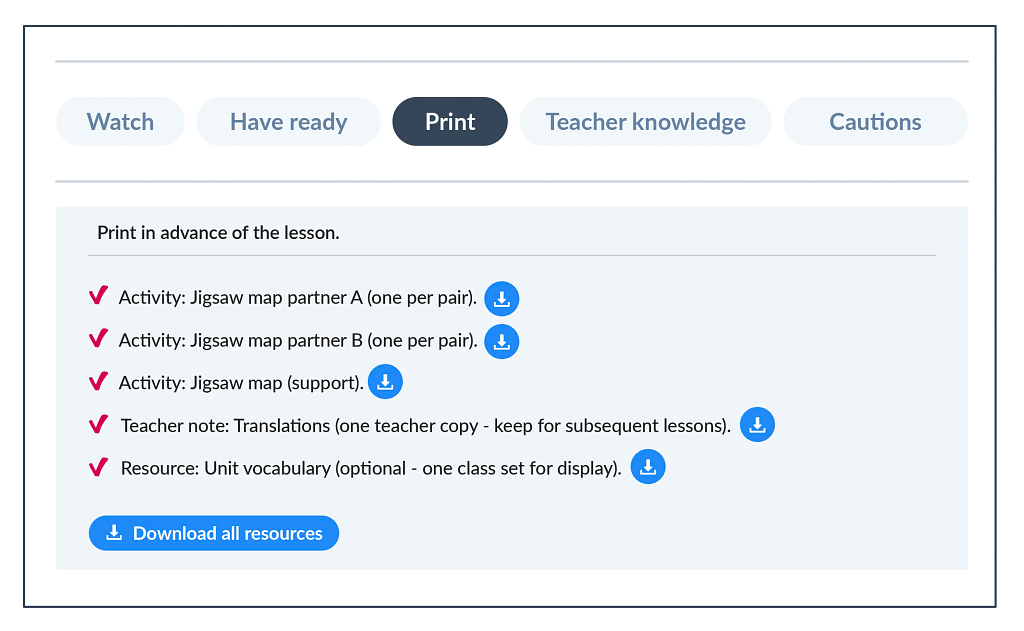 For illustrative purposes only – the exact ‘Before the lesson’ sections vary between lessons.
For illustrative purposes only – the exact ‘Before the lesson’ sections vary between lessons.
Teacher knowledge
View teacher knowledge at a glance, relevant to the particular lesson. This includes tips on lesson organisation, common misconceptions and additional subject knowledge to help teach tricky concepts with confidence.
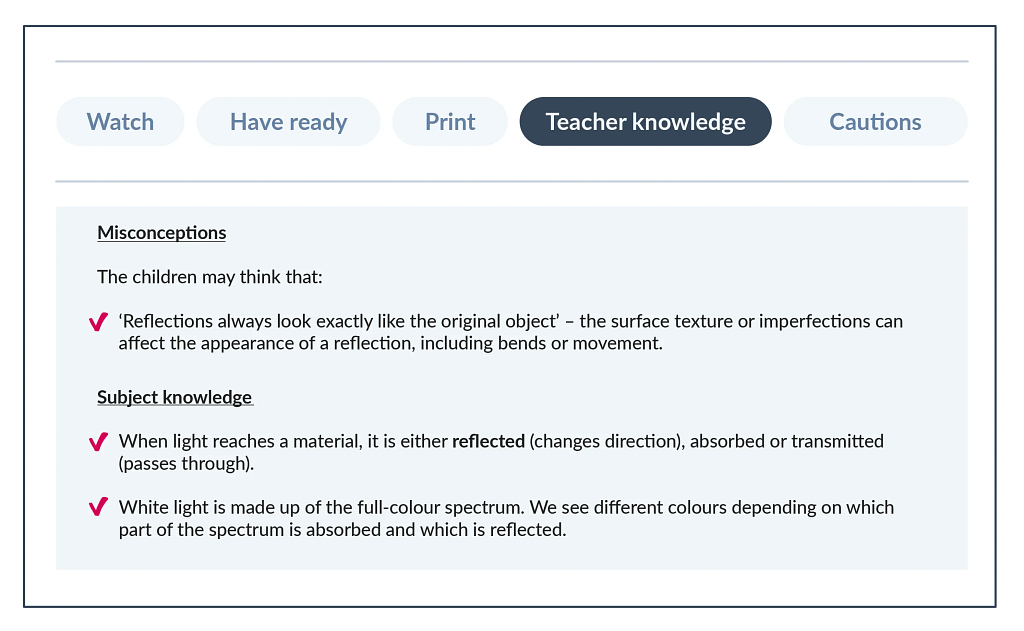 For illustrative purposes only – the exact ‘Before the lesson’ sections vary between lessons.
For illustrative purposes only – the exact ‘Before the lesson’ sections vary between lessons.
Cautions
This section highlights parts of the lesson that may need careful handling or may be relevant for a particular cohort. Background information and suggested guidance are provided to help navigate lessons with potentially sensitive topics.
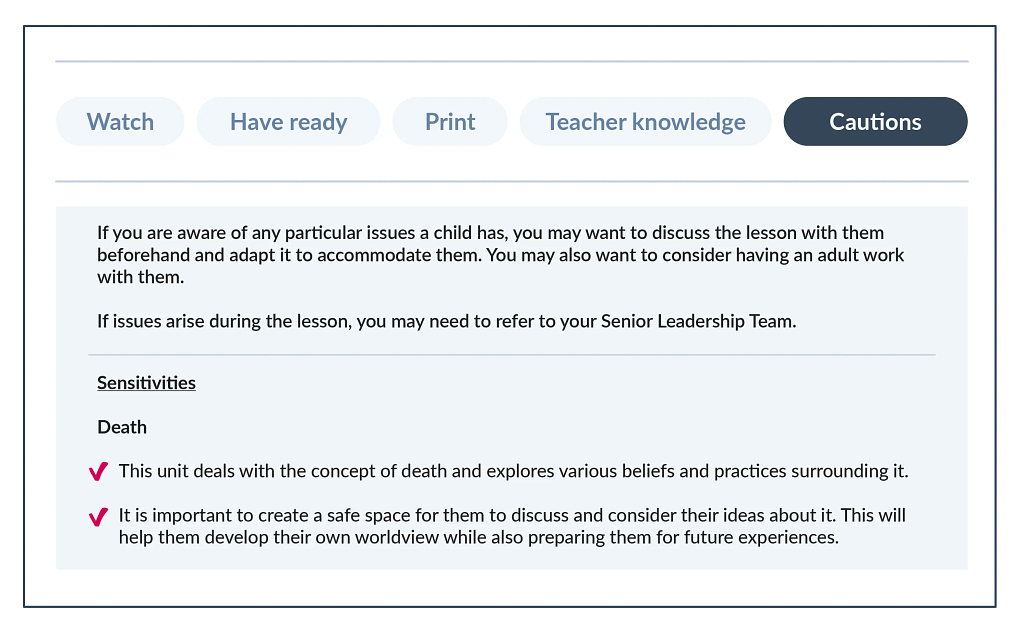 For illustrative purposes only – the exact ‘Before the lesson’ sections vary between lessons.
For illustrative purposes only – the exact ‘Before the lesson’ sections vary between lessons.
Unit structure
Unit hubs
D&T unit hubs contain all the necessary lesson links, resources and information relevant to the unit being taught.
Information on the unit hubs corresponds to all the relevant D&T key documents, including the Progression of skills and knowledge and Vocabulary progression.
The unit hub also links to useful resources and key documents, features units that build on knowledge or activate prior learning and outlines cross-curricular links.
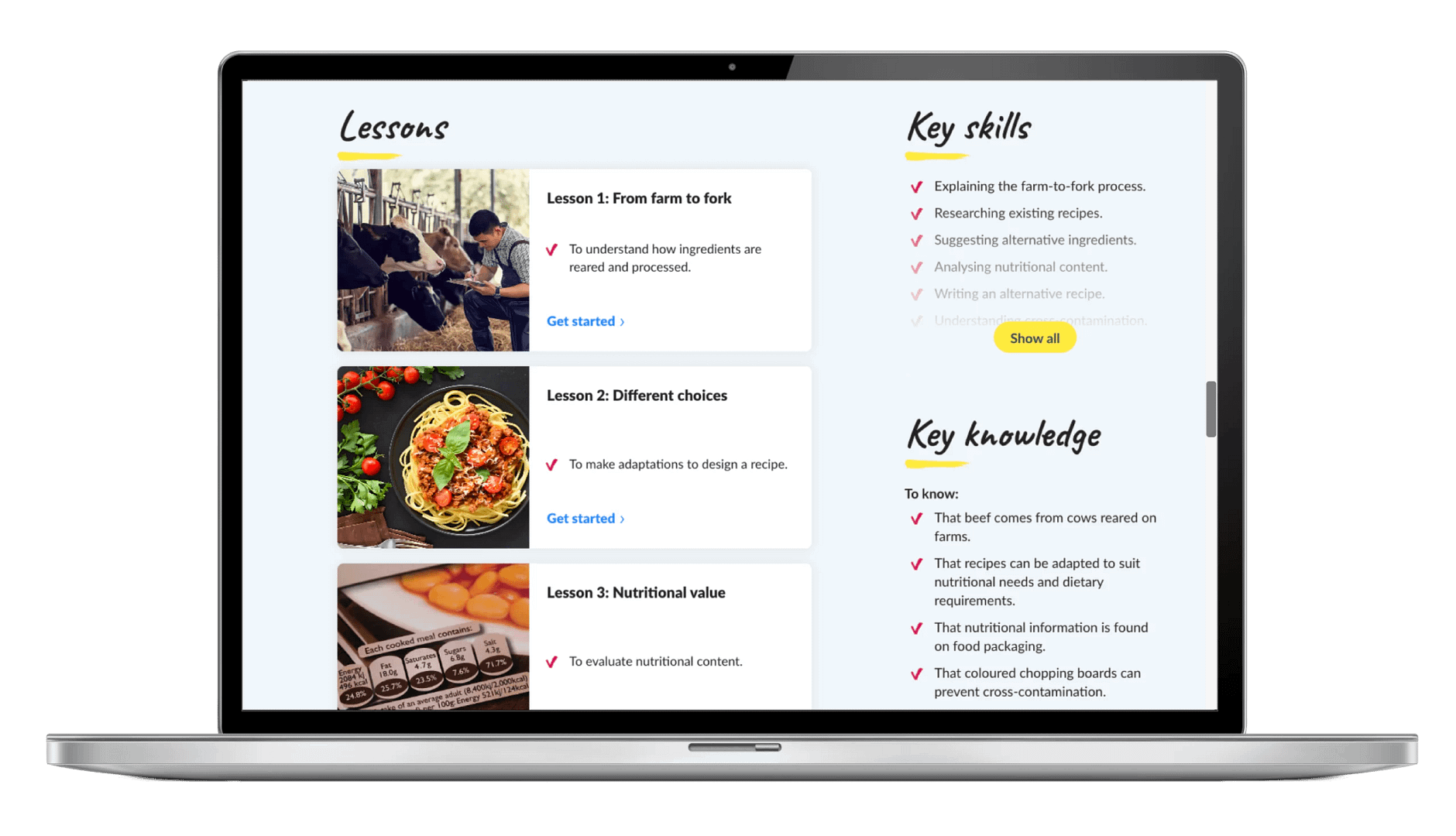
Unit hubs offer a wealth of useful information such as useful updates; major planning considerations like practical activities; key skills and knowledge; and much more.
The design cycle
It is important that pupils begin to ‘think like designers and engineers’ by considering how designers identify problems, generate ideas and create solutions to meet real-world needs.
Accordingly, Kapow Primary’s D&T scheme uses the design cycle to support planning and making. This encourages pupils to ask design questions and learn how designers and engineers develop and refine their ideas through research, testing and evaluation.
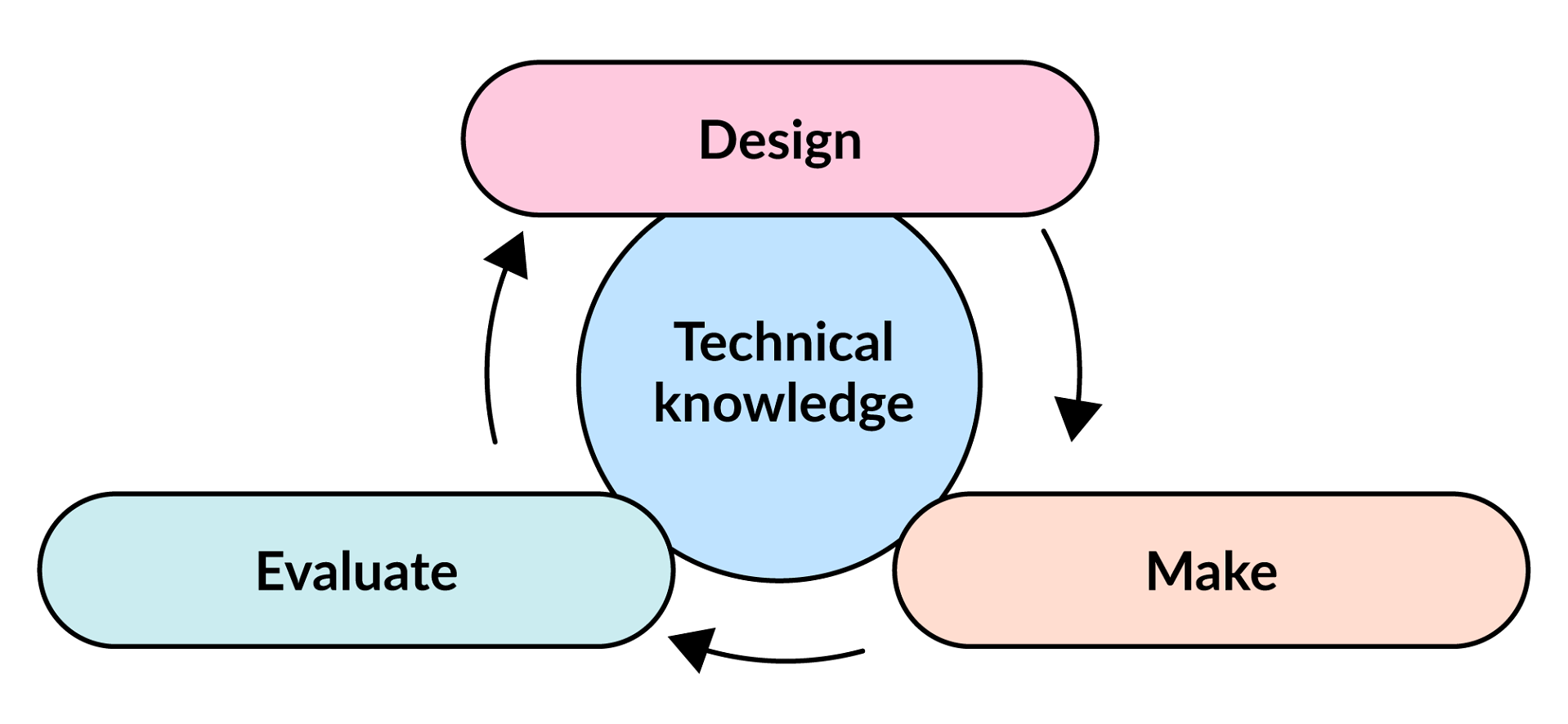
Lesson structure
Recap and recall
Each lesson begins with a short activity revisiting prior learning. This helps reinforce key knowledge, activate long-term memory and create connections between past and new learning.
Recap and recall activities are varied to keep the start of the lesson engaging and fun while still supporting active recall.
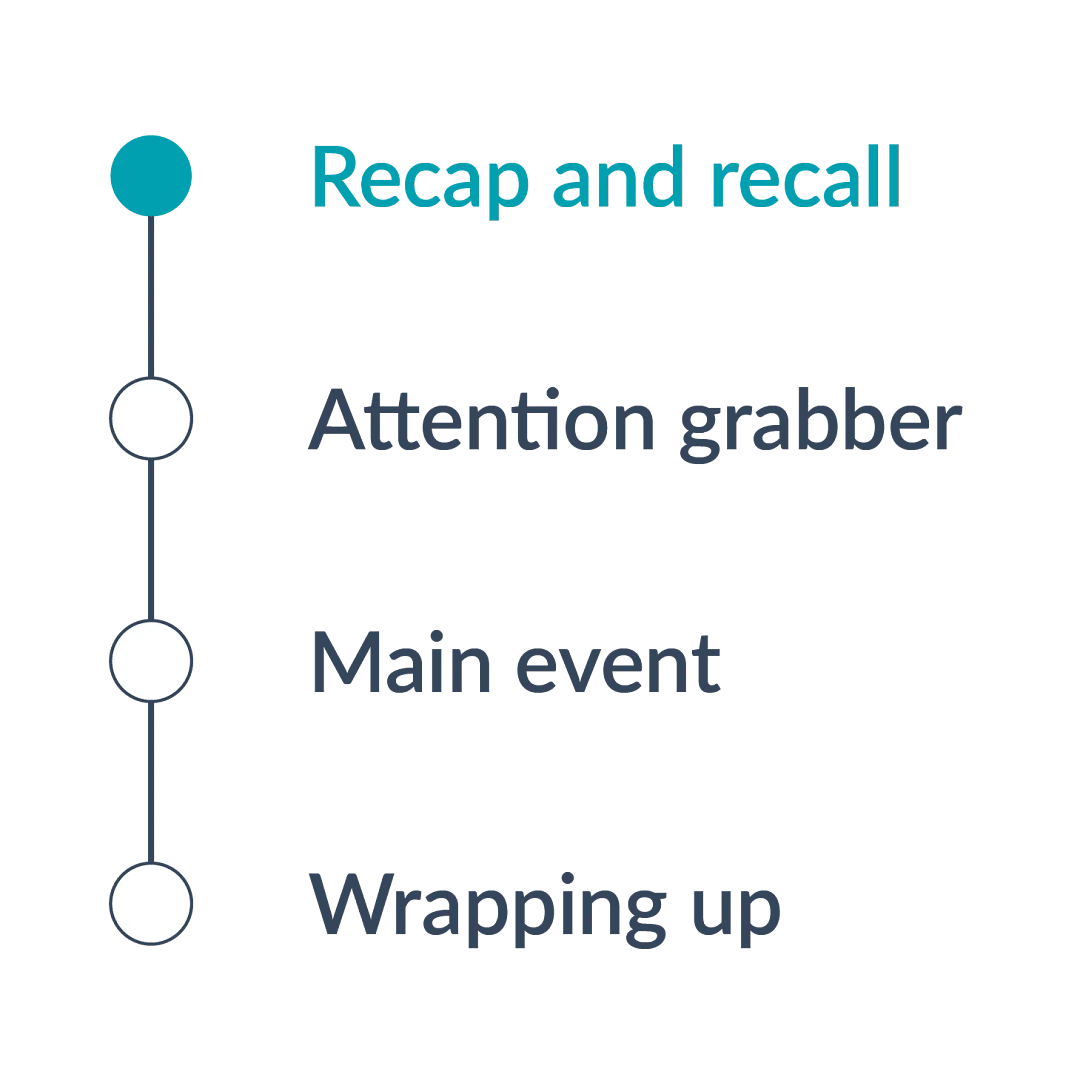
Attention grabber
A short, engaging activity designed to hook pupils into the new learning in the lesson.
This could be a thought-provoking question, a quick investigation or an interactive discussion to spark curiosity and enthusiasm for the topic.
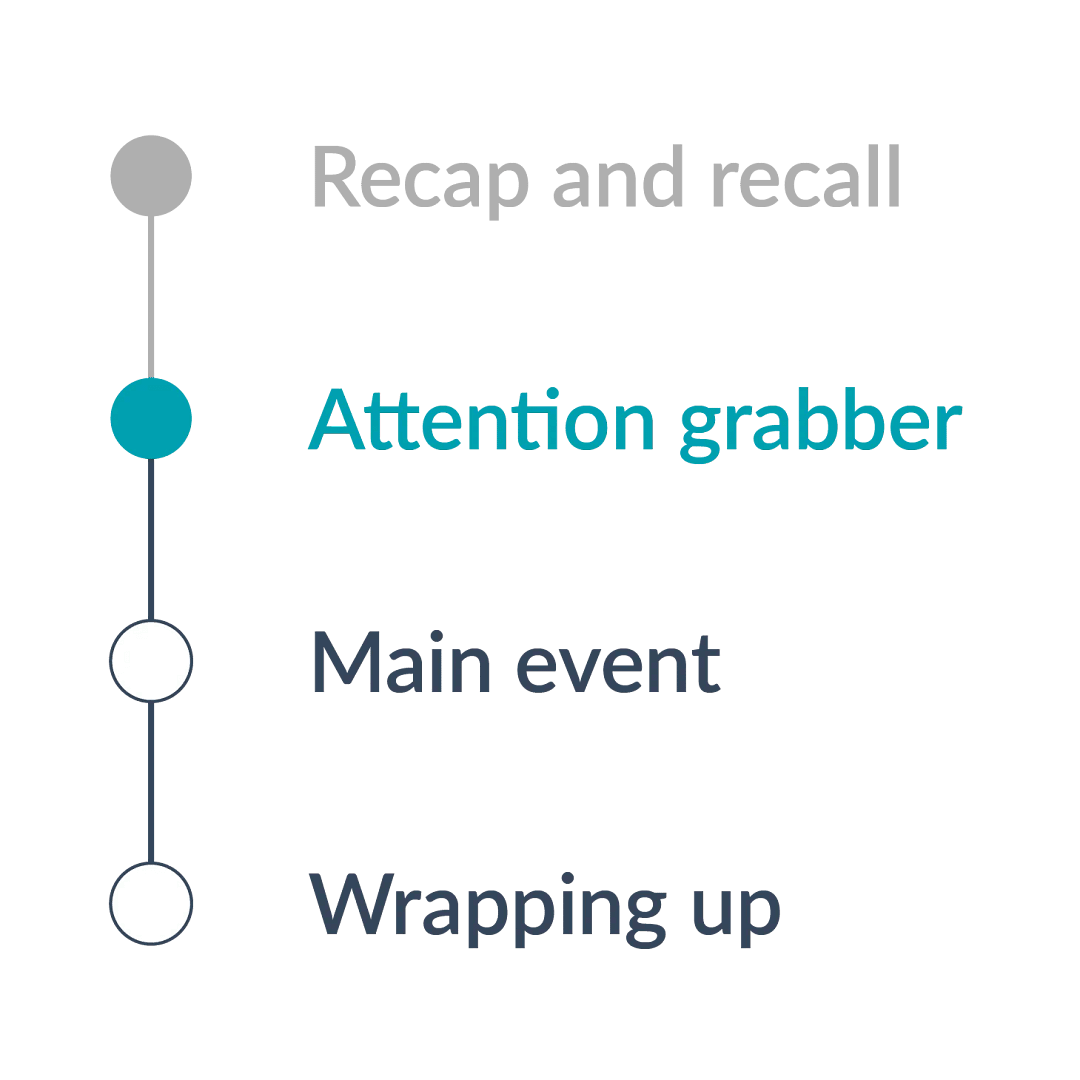
Main event
The core part of the lesson, where pupils engage in activities that develop their understanding of the learning objective.
This includes a mixture of teacher modelling, guided practice and independent or collaborative tasks tailored to support all learners.
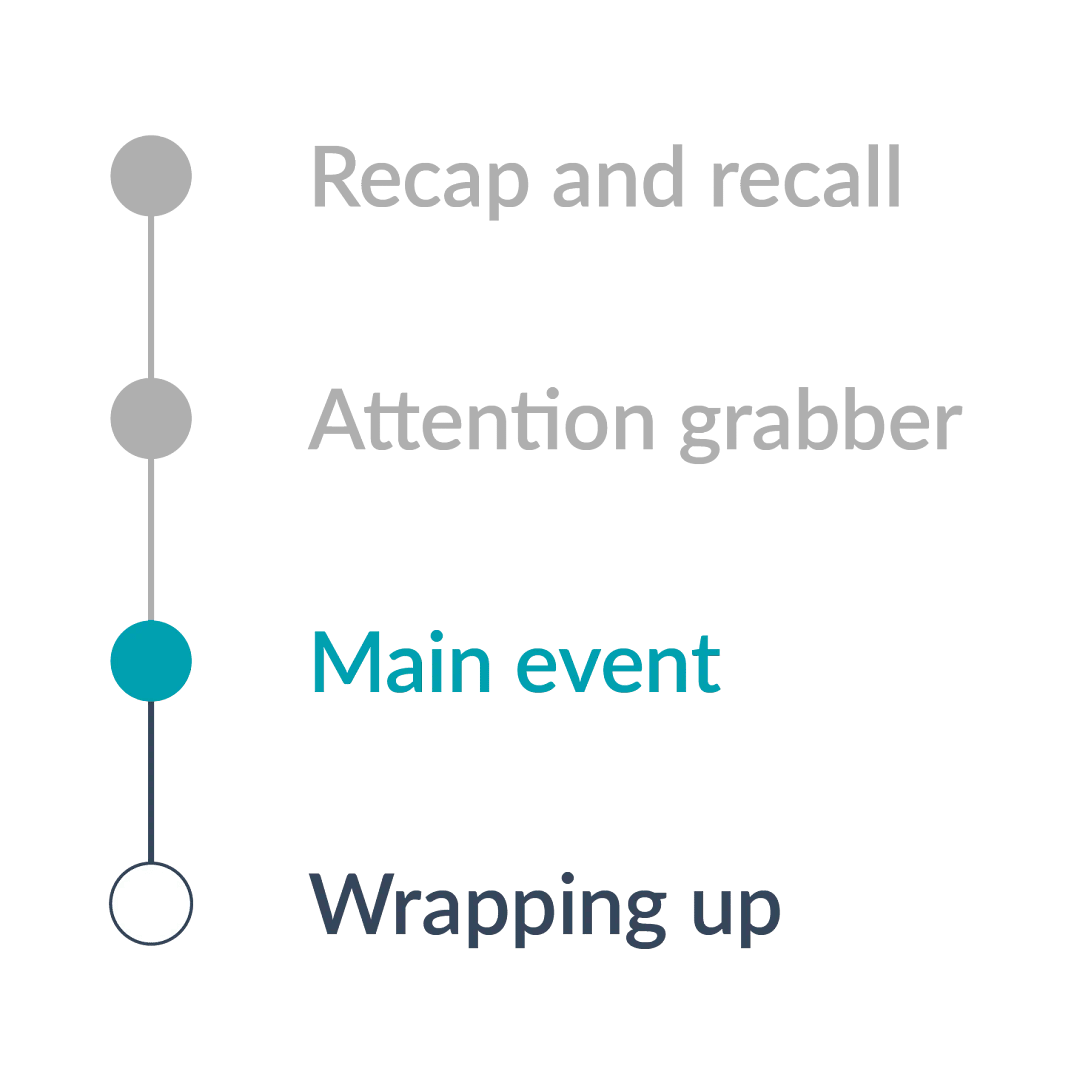
Wrapping up
A final reflective activity that consolidates learning.
This could involve reviewing the success criteria, discussing key learning or applying knowledge in a different context to assess understanding and encourage deeper thinking.
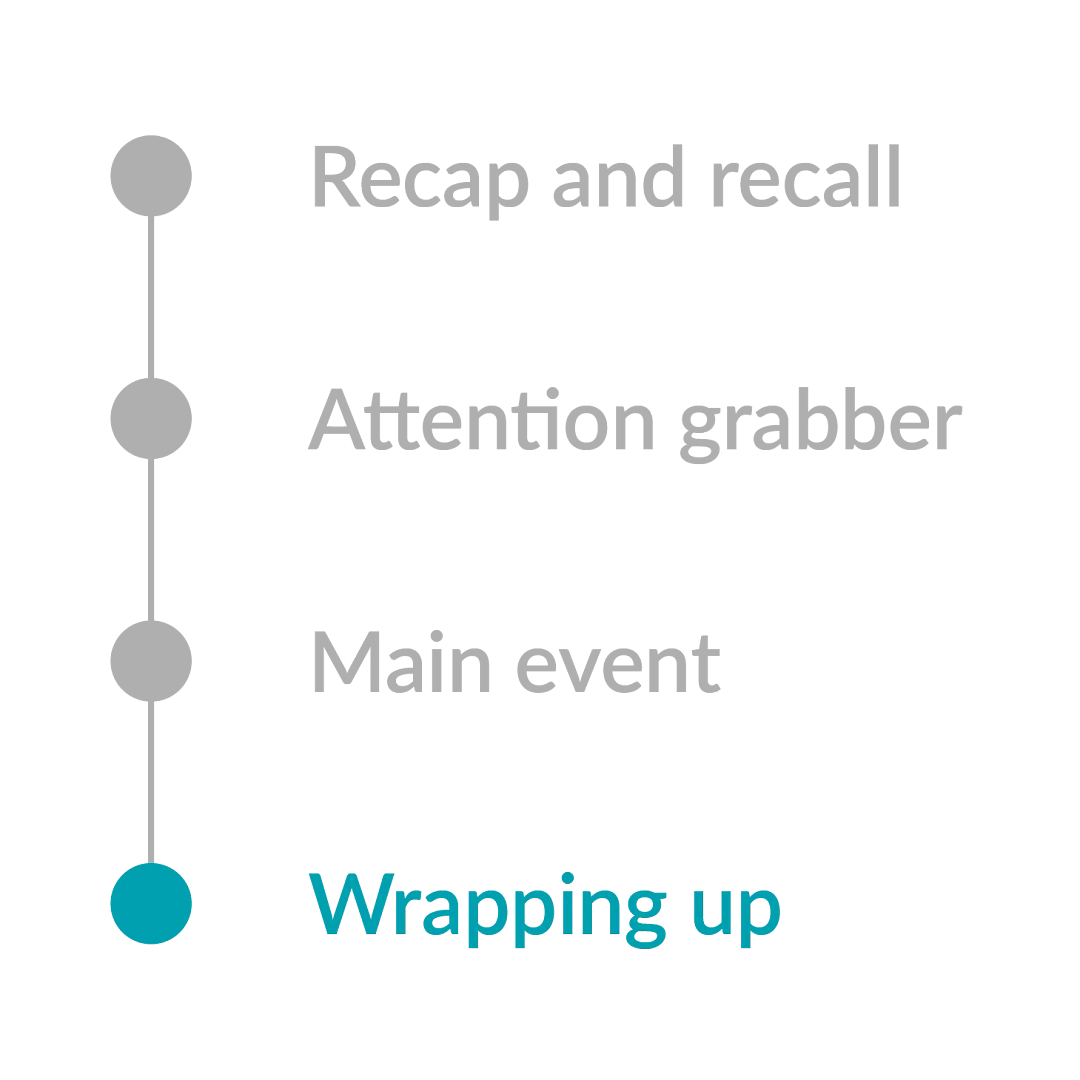
SEND
Kapow Primary’s D&T scheme is designed to be fully adaptable for SEND pupils. Every lesson includes an adaptive teaching section, providing clear guidance on how activities can be modified to meet the needs of all learners.
Children learn in a variety of ways. As such, Kapow Primary’s D&T lessons include a range of strategies to support and challenge every pupil, including:

Scaffolding – activities are designed with flexibility in mind, allowing for additional support or challenge where needed.
Multi-sensory approaches – lessons incorporate different elements to engage all learners.
Clear instructions and structured tasks – ensuring clarity and reducing cognitive load for pupils who benefit from additional support.
Opportunities for collaborative and independent learning – allowing pupils to work at their own pace while building confidence and independence.
By embedding adaptive teaching throughout, the scheme ensures that all pupils, regardless of their starting points, can access and succeed in their learning.
In addition, the step-by-step curriculum design supports pupils with SEND, avoiding sudden jumps in complexity at transition points and allowing for steady, manageable progression.
Knowledge retention
Spiral curriculum
Kapow Primary’s D&T scheme incorporates a spiral curriculum model, ensuring that pupils revisit and develop their understanding of key themes and concepts as they progress. This approach allows them to make meaningful connections, reinforce their learning and achieve mastery over time.
- Revisiting key concepts – pupils encounter the same ideas multiple times throughout their education, with each revisit adding more complexity.
- Progressive depth – concepts are not just repeated but expanded upon, helping pupils to make connections and develop a richer understanding over time.
- Knowledge retention – regular exposure to key ideas strengthens memory and prevents knowledge from being forgotten.
- Skill development – pupils refine and apply their skills in different contexts, improving their ability to think critically and solve problems.
- Adaptive learning – by building on prior knowledge, the curriculum meets pupils at their current level and supports all learners, including those who need extra reinforcement and those who are ready for greater challenges.

Knowledge organisers
Kapow Primary’s Knowledge organisers are a structured document designed to support pupils’ learning by clearly outlining the key knowledge, vocabulary and concepts covered in a unit of work.
Knowledge organisers serve as a reference tool for both teachers and pupils, helping to consolidate learning and support knowledge retention.
- Essential knowledge at a glance – summarises the most important facts, concepts and skills that pupils need to learn for a particular unit.
- Key vocabulary – provides a list of subject-specific terms with definitions to develop pupils’ language and understanding.
- Clear and visual layout – organised in a way that makes information easy to digest and revisit, often using diagrams, timelines or key images.
- Support for retrieval practice – helps pupils engage in self-assessment, recall activities and revision, reinforcing long-term memory.
- Teacher and pupil-friendly – acts as a quick reference for teachers when planning lessons and an accessible learning aid for pupils to develop independence in their studies.
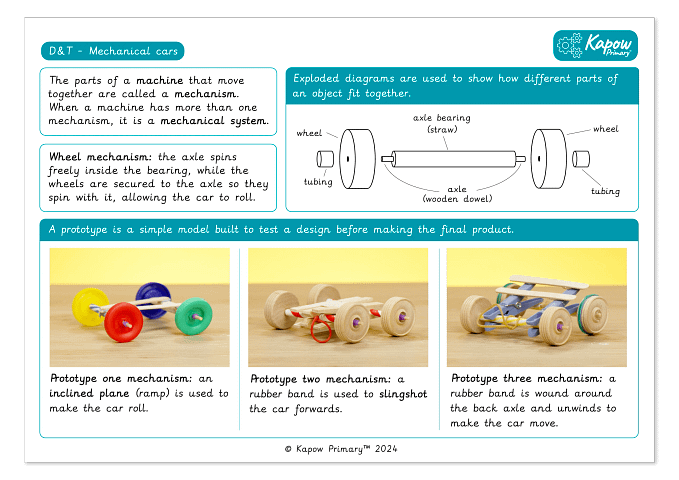
Recap and recall
- Activates prior knowledge – helps pupils make connections between new and existing learning, reducing cognitive overload.
- Strengthens memory pathways – retrieval practice has been shown to improve retention more effectively than passive review.
- Identifies gaps in understanding – teachers can quickly assess what pupils remember and address misconceptions before introducing new content.
- Builds confidence – regular recall activities reassure pupils that they can remember key concepts, improving engagement and motivation.
- Promotes spaced learning – revisiting prior learning at regular intervals supports long-term retention, rather than cramming information in a single lesson.

Assessment during the lesson
Formative assessment is embedded throughout Kapow Primary’s D&T lessons to ensure that teachers can gauge pupils’ understanding in real time and adapt their teaching accordingly.
- Questioning – Lesson plans include targeted and open-ended questions to check understanding, promote critical thinking and address misconceptions.
- Observation – Teachers are supported to observe pupils during tasks, noting how they approach activities, collaborate and apply design skills.
- Discussion and peer interaction – Pair and group discussions are built into lessons, providing opportunities for pupils to articulate their thinking and for teachers to assess understanding through dialogue.
- Lesson pauses – Plans include strategic pause points for checking comprehension, summarising learning and addressing any common errors before progressing.
- Retrieval practice – Recap activities, such as short recall tasks and oral explanations, are embedded to reinforce prior knowledge and assess retention.
- Use of success criteria – Success criteria are shared within lessons, allowing pupils to self-assess or peer-assess their work and reflect on their progress.
- Short reflections in the Wrapping up – Lessons end with brief written or verbal reflections, enabling pupils to consolidate learning and teachers to gauge understanding.
Additional adults
Support for additional adults
Kapow Primary recognises that teaching assistants play a vital role in many classrooms and that in some schools, they may be responsible for delivering lessons. Accordingly, anyone teaching Kapow Primary’s D&T lessons can be issued a login.
While the scheme is primarily designed for teachers, the clear lesson structure, step-by-step guidance and adaptive teaching strategies ensure that lessons can also be taught by teaching assistants.

Schools without additional adults
Due to budget constraints and varied staffing structures, it is not always possible to have classroom support from additional staff.
Kapow Primary’s D&T lessons are designed with this in mind, providing resources and explanations that allow teachers to deliver high-quality lessons independently without necessarily relying on additional adults.
If additional support is suggested in a lesson, it is clearly marked within the ‘Have ready’ part of the lesson plan and on ‘Unit hubs’, allowing planning for additional adults to happen prior to the lesson.

Adapting Kapow Primary's D&T scheme of work
Mixed-age
For schools with mixed-age classes, Kapow Primary offers structured long-term plans that ensure a coherent and progressive curriculum. These plans avoid content repetition while ensuring all pupils cover the full curriculum.
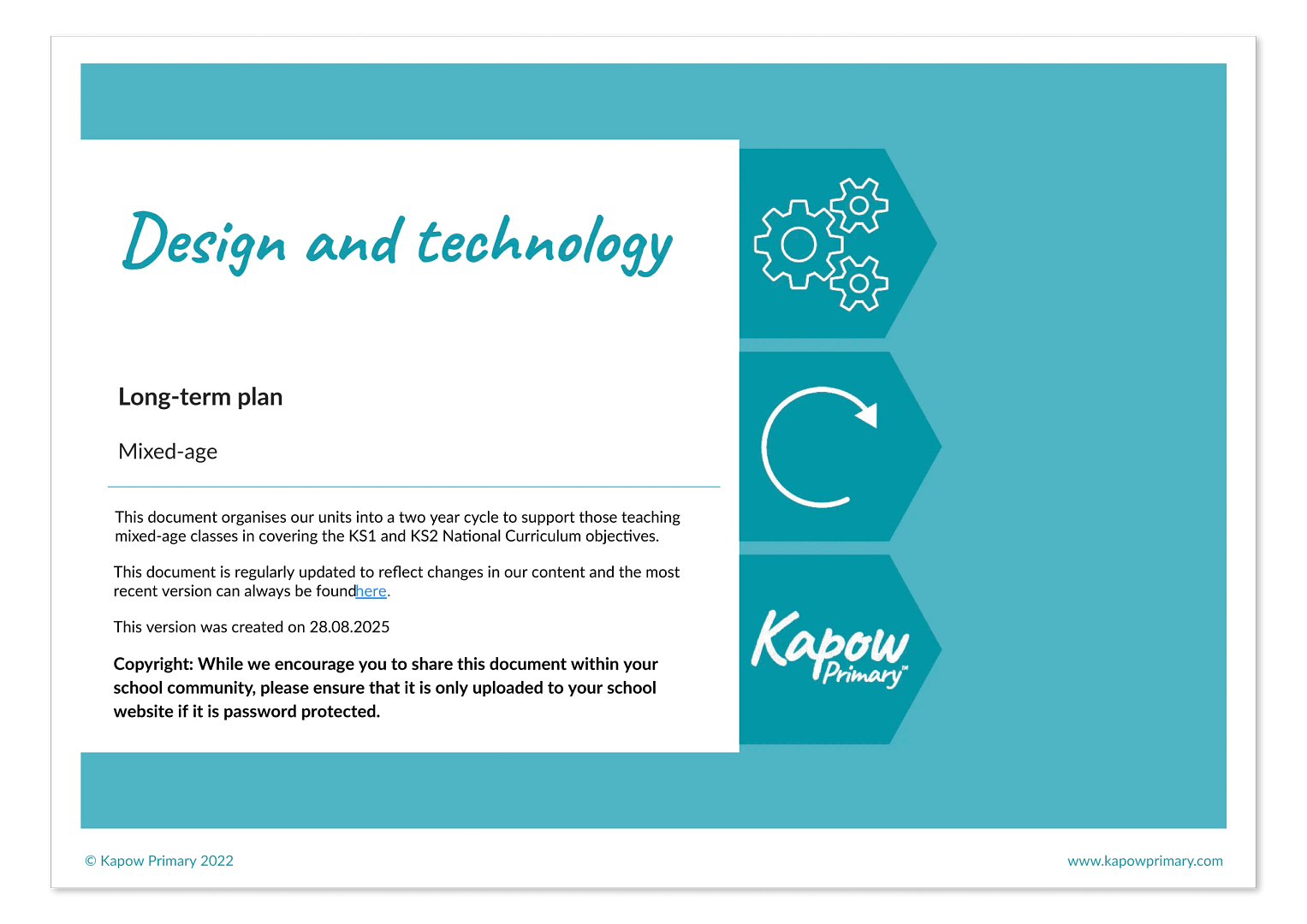
Condensed
Kapow Primary’s Design and technology curriculum is designed to be taught half-termly.
For schools with limited curriculum time, Kapow Primary also offers a condensed scheme that maintains full National curriculum coverage while streamlining content to focus on the most essential knowledge and skills.
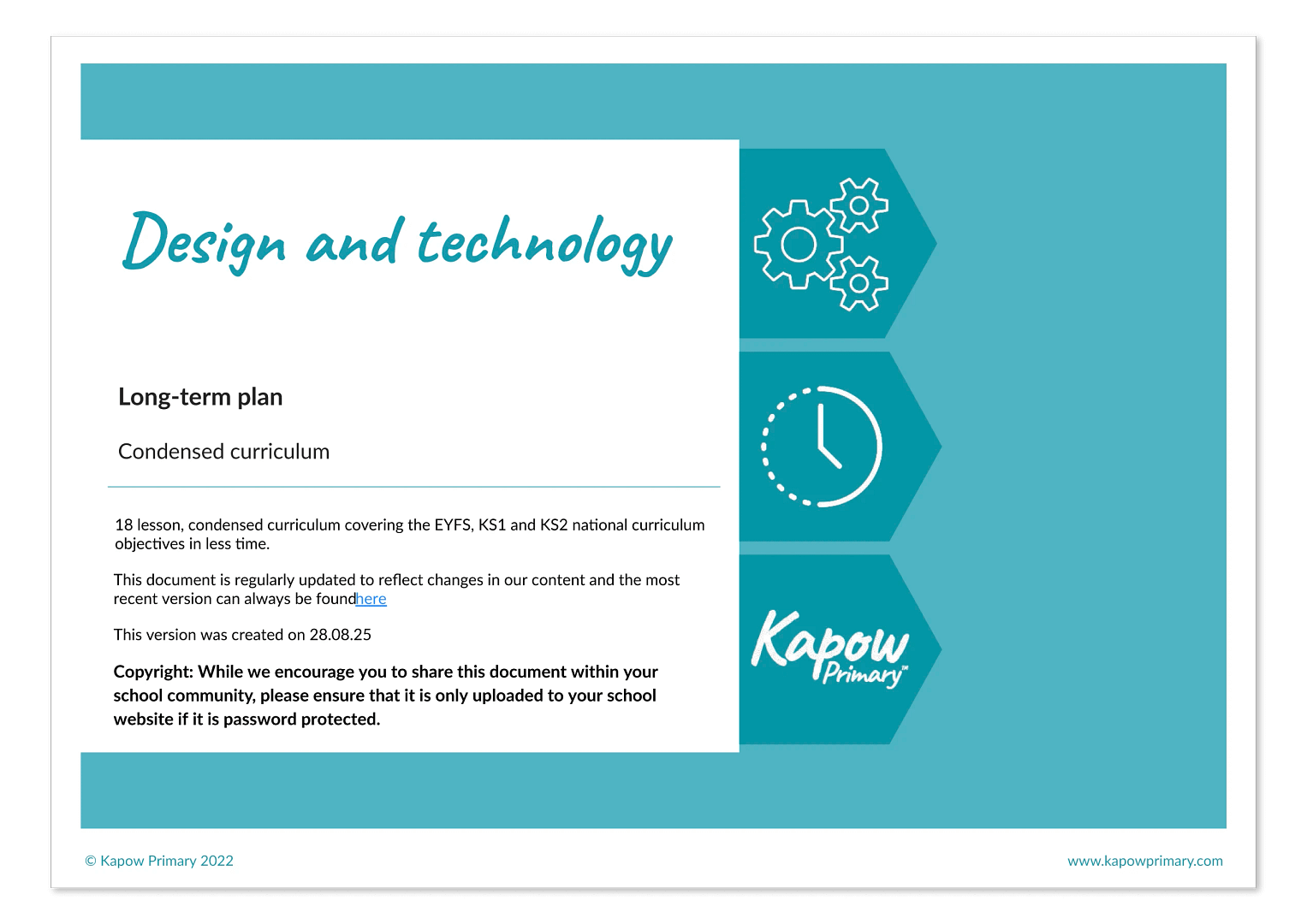
Cross-curricular learning
Kapow Primary’s D&T scheme supports cross-curricular learning by making clear connections between subjects, helping pupils develop a broader understanding of key concepts and skills.
Cross-curricular links are explicitly highlighted: each unit includes identified cross-curricular connections, detailed in the unit hub and long-term plans. These allow teachers to integrate learning across different subjects.
In addition, each lesson has a ‘Cross-curricular links’ section that shows the links to the National curriculum in other relevant subjects.

3. Impact
This section outlines how the curriculum checks what pupils know, understand and are able to do as a result of studying Design and technology.
Assessment
Formative
Kapow Primary’s D&T lessons include ongoing assessment opportunities, such as questioning, retrieval practice and interactive activities.
These enable teachers to assess understanding in real time and adapt their teaching accordingly.

Summative
Each unit provides an Assessment quiz and Knowledge catcher, which allow teachers to measure pupils’ understanding at key points.
These tools help gauge how well pupils have retained key knowledge and skills over time.
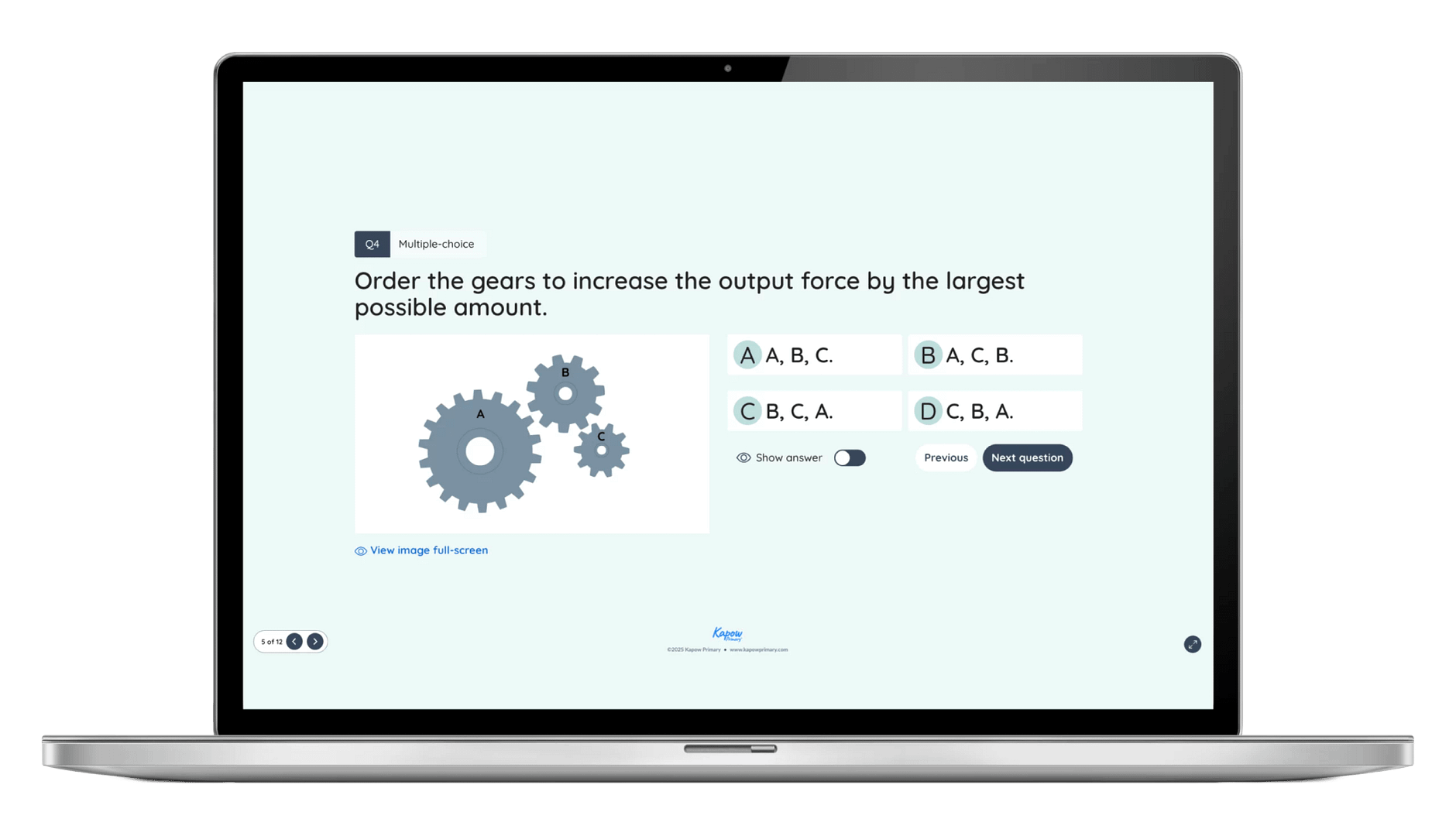
Evidencing progress
Written outcomes
Pupils demonstrate their learning and provide tangible evidence of progress through a variety of activities, including structured written work, annotated diagrams and creative responses.

Pupil voice
Lessons encourage discussion, reflection and verbal explanations. This allows teachers to capture pupils’ understanding through questioning, class discussions and recorded responses, supporting a broader view of progress beyond written work.

Assessment spreadsheet
The Assessment spreadsheet helps track pupils’ D&T attainment over time.
This tool allows teachers to record progress against learning objectives and assessment statements, making it easier to monitor development and identify areas for support.

Whole-school development
Teacher confidence
The Kapow Primary D&T scheme is designed to boost teacher confidence and support whole-school improvement by providing high-quality, accessible resources that empower teachers to deliver engaging and effective lessons.
The scheme supports teacher confidence using:
- Clear lesson plans and subject knowledge support – step-by-step guidance ensures teachers feel well-prepared, even if they are not subject specialists.
- CPD videos – short, expert-led training videos help subject leaders develop their expertise and support their colleagues.
- Adaptive teaching strategies – practical suggestions for differentiation ensure that teachers can confidently meet the needs of all learners.

School improvement
The scheme supports school improvement using:
- Consistent, high-quality teaching – a structured scheme ensures a coherent approach across year groups, supporting curriculum progression.
- Assessment and evidence tracking – built-in assessment materials help teachers monitor progress and demonstrate impact.
- Alignment with Ofsted expectations – the scheme supports personal development, broadens pupils’ horizons and ensures a knowledge-rich curriculum, helping schools meet inspection criteria.
By reducing workload, building teacher expertise and ensuring high teaching standards, Kapow Primary contributes to a confident teaching staff and a well-structured, effective curriculum that supports whole-school improvement.

Support with inspections
A well-structured and progressive curriculum
- Clear learning sequences ensure knowledge builds over time.
- Lessons are aligned with the National curriculum.

Evidence of pupil progress
- Assessment materials (e.g. Unit quizzes, Knowledge catchers and the Assessment spreadsheet) can be used to provide information about pupil progress.
- Written outcomes and pupil voice show engagement, understanding and the ability to recall knowledge.

Support for subject leadership
- Key documents and CPD videos help subject leaders confidently discuss the curriculum.
- Knowledge organisers and lesson plans provide details of what has been taught and learned.
- The Adaptive teaching section in each lesson provides an opportunity to discuss inclusivity and demonstrate how all learners are supported.

A broad and balanced curriculum
- The scheme broadens pupils’ horizons, develops critical thinking and promotes British values, contributing to Ofsted’s personal development criteria.
- Lessons integrate real-world connections and cultural capital, showcasing a rich learning experience.

CPD
- Equips subject leaders to articulate intent, implementation and impact – CPD videos provide clear explanations and subject knowledge to help leaders confidently discuss the curriculum with inspectors.
- Builds teacher confidence and consistency – ongoing training ensures all staff understand the curriculum structure and feel prepared to deliver high-quality D&T lessons across the school.

D&T scheme FAQs
Unable to find the answer you are looking for?
Try these useful links
The long-term plans for our standard and mixed-age schemes are in the curriculum tool for D&T.
Click each unit to find more details, including a unit overview, National curriculum links and cross-curricular information.
The D&T scheme is designed to boost teacher confidence and support whole-school improvement by providing high-quality, accessible resources that empower teachers to deliver engaging and effective lessons.
The scheme helps support teacher confidence by providing:
- Clear lesson plans and subject knowledge support – Step-by-step guidance ensures teachers feel well-prepared, even if they are not subject specialists.
- CPD videos – Short, expert-led training videos help subject leaders develop their expertise and support their colleagues.
- Adaptive teaching strategies – Practical suggestions for differentiation ensure that teachers can confidently meet the needs of all learners.
The scheme aids school improvement by supporting:
- Consistent, high-quality teaching – A structured scheme ensures a coherent approach across year groups, supporting curriculum progression.
- Assessment and evidence tracking – Built-in assessment materials help teachers monitor progress and demonstrate impact.
- Alignment with Ofsted expectations – The scheme supports personal development, broadens pupils’ horizons and ensures a knowledge-rich curriculum, helping schools meet inspection criteria.
By reducing workload, building teacher expertise, and ensuring high teaching standards, Kapow contributes to a confident teaching staff and a well-structured, effective curriculum.

